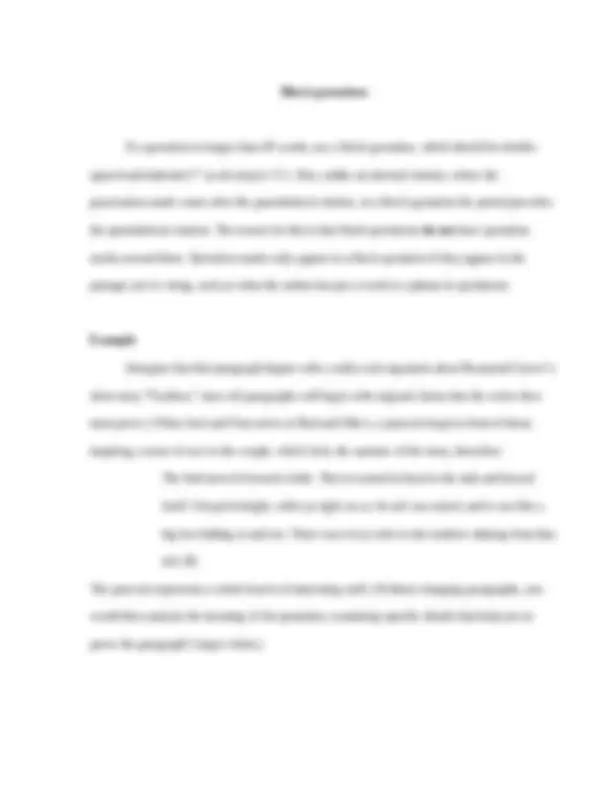



Study with the several resources on Docsity

Earn points by helping other students or get them with a premium plan


Prepare for your exams
Study with the several resources on Docsity

Earn points to download
Earn points by helping other students or get them with a premium plan
Community
Ask the community for help and clear up your study doubts
Discover the best universities in your country according to Docsity users
Free resources
Download our free guides on studying techniques, anxiety management strategies, and thesis advice from Docsity tutors
Guidance on writing about literature, focusing on fitzgerald's the great gatsby, specifically the characterization of george wilson and the use of quotations. Wilson's depiction as a member of the working class, contrasting him with tom buchanan, and the importance of writing in the present tense and avoiding unnecessary quotation references. It also explains the rules for citing longer quotations using block quotations.
Typology: Papers
1 / 2

This page cannot be seen from the preview
Don't miss anything!


Opening Arguments, Textual Evidence, Citations, and Textual Analysis (From a paper turned in for Dr. Masters’ ENGL 2130 Class)
the larger landscape; he is a piece of waste wiping his hands on another piece of waste. The image of an “anemic” and “faintly handsome” man implies a slight degree of sympathy for this man whose station has relegated him to the infertile “valley of ashes” (23), which has deflated his spirit and defeated his resolve. At the end of The Great Gatsby , Fitzgerald continues to utilize the poetic ability of his narrator to move between the fantastic and the real as Nick looks at his recent past in West Egg, and his relatively distant past in the American West. […] When writing about literature, always write in the present tense. The only exception occurs when you write about a character reflecting on the past or in relation to the past. For instance, “When Vivian thinks back to her childhood, she remembers that her father treated her as a small adult rather than a vulnerable child.” Notice, however, that the majority of the sentence is still in the present tense. Avoid referring to the quotation you’ve cited as a quotation, which is awkward and unnecessary. Awkward: “In this quotation, Fitzgerald uses images of waste and garbage to symbolize Wilson’s place in the social order.” Improved: “The pervasive imagery of waste and garbage symbolizes Wilson’s lowly place in the social order.” Italicize (or underline) the titles of longer works like novels, films, plays, albums, and short story or poetry collections, and put short works in parenthesis (short stories, poems, songs, etc.).